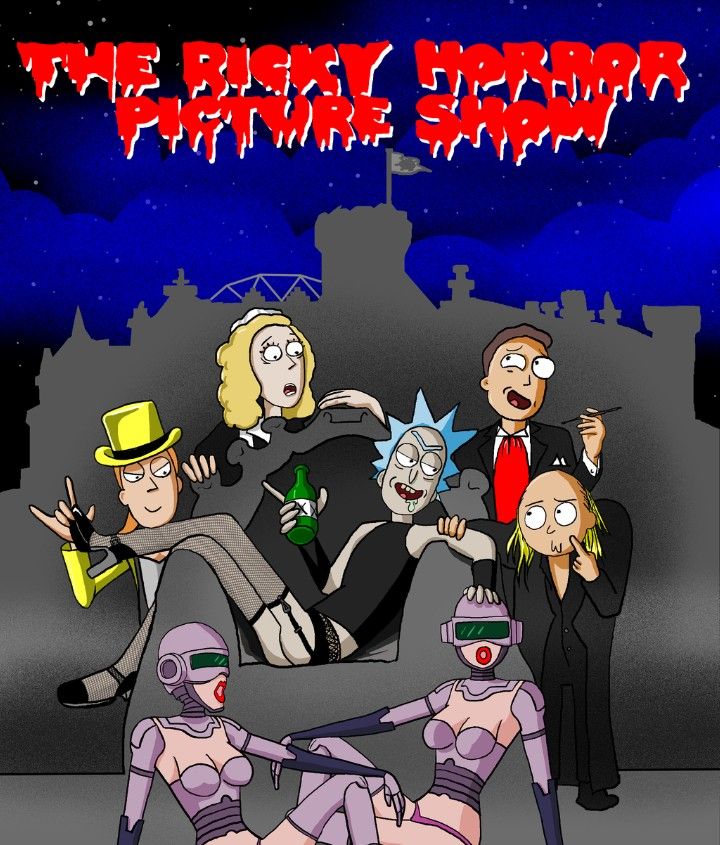Blog
Floyd Dixon (February 8, 1929 – July 26, 2006) was an American rhythm-and-blues pianist and singer.
Dixon was born in Marshall, Texas. Some sources give his birth name as Jay Riggins, Jr., although he himself stated that Floyd Dixon was his real name and that his parents were Velma and Ford Dixon. Growing up, he was influenced by blues, gospel, jazz and country music. His family moved to Los Angeles, California, in 1942. There Dixon met Charles Brown, who had an influence on his music.
The self-dubbed “Mr. Magnificent”, Dixon signed a recording contract with Modern Records in 1949, specializing in jump blues and sexualized songs like “Red Cherries”, “Wine Wine Wine”, “Too Much Jelly Roll” and “Baby Let’s Go Down to the Woods”. Both “Dallas Blues” and “Mississippi Blues”, credited to the Floyd Dixon Trio, reached the Billboard R&B chart in 1949, as did “Sad Journey Blues”, issued by Peacock Records in 1950.
more...Alonzo “Lonnie” Johnson (February 8, 1899 – June 16, 1970) was an American blues and jazz singer, guitarist, violinist and songwriter. He was a pioneer of jazz guitar and jazz violin and is recognized as the first to play an electrically amplified violin.
Johnson was born in New Orleans, Louisiana, and raised in a family of musicians. He studied violin, piano and guitar as a child and learned to play various other instruments, including the mandolin, but he concentrated on the guitar throughout his professional career. “There was music all around us,” he recalled, “and in my family you’d better play something, even if you just banged on a tin can.
https://www.youtube.com/watch?v=Qp9BlskYdqU
more...It is now widely accepted amongst astronomers that an important aspect of how galaxies evolve is the way they interact with one another. Galaxies can merge, collide, or brush past one another — each of which has a significant impact on their shapes and structures. As common as these interactions are thought to be in the Universe, it is rare to capture an image of two galaxies interacting in such a visibly dynamic way. This image, from the NASA/ESA Hubble Space Telescope, feels incredibly three-dimensional for a piece of deep-space imagery. The subject of this image is named Arp 282, an interacting galaxy pair that is composed of the Seyfert galaxy NGC 169 (bottom) and the galaxy IC 1559 (top). If you’re interested in learning more about Seyfert galaxies, you can read about the Seyfert galaxy NGC 5728 here. Interestingly, both of the galaxies comprising Arp 282 have monumentally energetic cores, known as active galactic nuclei (AGN), although it is difficult to tell that from this image. This is actually rather fortunate, because if the full emission of two AGNs was visible in this image, then it would probably obscure the beautifully detailed tidal interactions occurring between NGC 169 and IC 1559. Tidal forces occur when an object’s gravity causes another object to distort or stretch. The direction of the tidal forces will be away from the lower-mass object and towards the higher mass object. When two galaxies interact, gas, dust and even entire solar systems will be drawn away from one galaxy towards the other by these tidal forces. This process can actually be seen in action in this image — delicate streams of matter have formed, visibly linking the two galaxies.

Earl Silas Johnson IV (February 7, 1934 – April 17, 2003), known as Earl King, was an American singer, guitarist, and songwriter, most active in blues music. A composer of blues standards such as “Come On” (covered by Jimi Hendrix, Freddie King, Stevie Ray Vaughan) and “Big Chief” (recorded by Professor Longhair), he was an important figure in New Orleans R&B.
King was born in New Orleans, Louisiana, United States. His father was a piano player. He died when Earl was still a baby, and Earl was brought up by his mother. With his mother, he started going to church at an early age. In his youth he sang gospel music, but he took the advice of a friend to switch to blues to make a better living.
King started to play the guitar at the age of 15. Soon he started entering talent contests at local clubs, including the Dew Drop Inn. At one such club he met his idol, Guitar Slim. King started imitating Slim, and his presence had a big impact on his musical direction. In 1954, Slim was injured in an automobile accident (right around the time he had the number 1 R&B hit “The Things That I Used To Do”), and King was deputized to continue a tour with Slim’s band, representing himself as Slim. After succeeding in this role, King became a regular at the Dew Drop Inn.
more...Curtis Ousley (born Curtis Montgomery; February 7, 1934 – August 13, 1971), known professionally as King Curtis, was an American saxophonist who played rhythm and blues, jazz, and rock and roll. A bandleader, band member, and session musician, he was also a musical director and record producer. A master of the instrument, he played tenor, alto, and soprano saxophone.[2] He played riffs and solos on hit singles such as “Respect” by Aretha Franklin (1965), and “Yakety Yak” by The Coasters (1958) and his own “Soul Serenade” (1964) and “Memphis Soul Stew” (1967).
Curtis Montgomery was born in Fort Worth, Texas, the son of Ethel Montgomery, and was adopted, with his sister Josephine Allen (died 2019), by Josie and William Ousley. Curtis attended I.M. Terrell High School, and studied and performed music with schoolmate Ornette Coleman (1930–2015).
more...Milton Holland (born Milton Olshansky; February 7, 1917 – November 4, 2005) was an American drummer, percussionist, ethnomusicologist, and writer in the Los Angeles music scene. He pioneered the use of African, South American, and Indian percussion styles in jazz, pop and film music, traveling extensively in those regions to collect instruments and learn styles of playing them.
Holland was born Milton Olshansky in Chicago, Illinois, where he attended Theodore Roosevelt High School. His first instrument was the violin. He pursued a passion for percussion, playing in clubs and shows and on CBS Radio in Chicago. By the age of twelve, he was playing at speakeasies for the likes of Al Capone.
more...James Hubert “Eubie” Blake (February 7, 1887 – February 12, 1983) was an American pianist, lyricist, and composer of ragtime, jazz, and popularmusic. In 1921, he and his long-time collaborator Noble Sissle wrote Shuffle Along, one of the first Broadway musicals to be written and directed by African Americans. Blake’s compositions included such hits as “Bandana Days”, “Charleston Rag”, “Love Will Find a Way”, “Memories of You” and “I’m Just Wild About Harry“. The 1978 Broadway musical Eubie! showcased his works.
Eubie Blake was born February 7, 1887, at 319 Forrest Street, in Baltimore, Maryland. Of the many children born to former slaves, Emily “Emma” Johnstone and John Sumner Blake, he was the only one to survive childhood. John Sumner Blake was a stevedore on the Baltimore Docks.
Blake claimed in later life to have been born in 1883, but records published beginning in 2003—U.S. Census, military, and Social Security records and Blake’s passport application and passport—uniformly give his birth year as 1887.
more...Final performance of Theatre 55’s production of RHPS at the West Banks Mixed Theatre Sunday February 5th 2022 3pm Matinee. Music Victor Zupanc, Jamie Carter, Lyra Olson and mick laBriola.

Welcome to planet Earth, the third planet from a star named the Sun. The Earth is shaped like a sphere and composed mostly of rock. Over 70 percent of the Earth’s surface is water. The planet has a relatively thin atmosphere composed mostly of nitrogen and oxygen. The featured picture of Earth, dubbed The Blue Marble, was taken from Apollo 17 in 1972 and features Africa and Antarctica. It is thought to be one of the most widely distributed photographs of any kind. Earth has a single large Moon that is about 1/4 of its diameter and, from the planet’s surface, is seen to have almost exactly the same angular size as the Sun. With its abundance of liquid water, Earth supports a large variety of life forms, including potentially intelligent species such as dolphins and humans. Please enjoy your stay on planet Earth.

Natalie Maria Cole (February 6, 1950 – December 31, 2015 LA, CA) was an American singer, songwriter, and actress. She was a daughter of American singer and jazz pianist Nat King Cole. She rose to success in the mid-1970s as an R&B singer with the hits “This Will Be“, “Inseparable” (1975), and “Our Love” (1977). She returned as a pop singer on the 1987 album Everlasting and her cover of Bruce Springsteen‘s “Pink Cadillac“. In the 1990s, she sang traditional pop by her father, resulting in her biggest success, Unforgettable… with Love, which sold over seven million copies and won her seven Grammy Awards. She sold over 30 million. Cole canceled several events in December 2015 due to illness; her last musical performance was a short set of three songs in Manila. She died at Cedars-Sinai Medical Center in Los Angeles on December 31, 2015, at the age of 65. Cole’s publicist said the singer’s death was the result of congestive heart failure, which her family said was a complication of idiopathic pulmonary arterial hypertension, which she had been diagnosed with after her kidney transplant in 2009records worldwide.
more...Calvin Keys (born February 6, 1943) is an American jazz guitarist, known for the several albums he released for Black Jazz Records.
Keys has performed and recorded with Ray Charles, Ahmad Jamal, John Handy, Bobby Hutcherson, Eddie Marshall, Sonny Stitt, Pharoah Sanders, Joe Henderson and Leon Williams.
more...John Pisano (born February 6, 1931) is a jazz guitarist born in Staten Island, New York.
Pisano has worked with Herb Alpert, Billy Bean, Chico Hamilton, Peggy Lee, and Joe Pass.
more...Robert Nesta Marley OM (6 February 1945 – 11 May 1981) was a Jamaican singer, songwriter, and musician. Considered one of the pioneers of reggae, his musical career was marked by fusing elements of reggae, ska, and rocksteady, as well as his distinctive vocal and songwriting style.Marley’s contributions to music increased the visibility of Jamaican music worldwide, and made him a global figure in popular culture for over a decade. Over the course of his career, Marley became known as a Rastafari icon, and he infused his music with a sense of spirituality. He is also considered a global symbol of Jamaican music and culture and identity, and was controversial in his outspoken support for democratic social reforms. In 1976, Marley survived an assassination attempt in his home, which was thought to be politically motivated. He also supported legalization of marijuana, and advocated for Pan-Africanism.
Born in Nine Mile, Jamaica, Marley began his professional musical career in 1963, after forming the Teenagers with Peter Tosh and Bunny Wailer, which after several name changes would become the Wailers. The group released its debut studio album The Wailing Wailers in 1965, which contained the single “One Love“, a reworking of “People Get Ready“; the song was popular worldwide, and established the group as a rising figure in reggae. The Wailers released a further eleven studio albums, and after signing to Island Records the band’s name became Bob Marley and the Wailers. While initially employing louder instrumentation and singing, the group began engaging in rhythmic-based song construction in the late 1960s and early 1970s, which coincided with Marley’s conversion to Rastafari. Around this time, Marley relocated to London, and the group embodied their musical shift with the release of the album The Best of The Wailers (1971).
The group started to gain international attention after signing to Island, and touring in support of the albums Catch a Fire and Burnin’ (both 1973). Following the disbandment of the Wailers a year later, Marley carried on under the band’s name. The album Natty Dread (1974) received positive reception. In 1975, following the global popularity of Eric Clapton‘s version of Marley’s “I Shot the Sheriff“, Marley had his international breakthrough with his first hit outside Jamaica, with a live version of “No Woman, No Cry“, from the Live! album. This was followed by his breakthrough album in the United States, Rastaman Vibration (1976), which reached the Top 50 of the Billboard Soul Charts. A few months after the album’s release Marley survived an assassination attempt at his home in Jamaica, which prompted him to permanently relocate to London. During his time in London he recorded the album Exodus (1977); it incorporated elements of blues, soul, and British rock and enjoyed widespread commercial and critical success.
In 1977, Marley was diagnosed with acral lentiginous melanoma; he died as a result of the illness in 1981. His fans around the world expressed their grief, and he received a state funeral in Jamaica. The greatest hits album Legend was released in 1984, and became the best-selling reggae album of all time. Marley also ranks as one of the best-selling music artists of all time, with estimated sales of more than 75 million records worldwide. He was posthumously honoured by Jamaica soon after his death with a designated Order of Merit by his nation. In 1994, he was inducted into the Rock and Roll Hall of Fame. Rolling Stone ranked him No. 11 on its list of the 100 Greatest Artists of All Time.
more...Saturday February 5th 2022 7pm produced by Theatre 55 at the West Banks Mixed Blood Theater. Closing performance tomorrow. Music Victor Zupanc, Jamie Carter, Lyra Olson and mick laBriola.

more...
More Posts
- Robert Cage
- Louisiana Red
- Stick McGhee
- World Music Ablaye Badji
- Daily Roots Marcia Griffiths
- Trans Measles
- Coco Tea Memorial
- Department of Education
- Democracy Working
- Cosmo Arp 316
- Andrew Lloyd Webber
- Leo Welsh
- Stephen Sondheim
- Fred Anderson
- George Benson
- World Music Memorial Aurelio Martinez
- Daily Roots Junior Mervin
- Character Color
- Housing First
- American Beauty